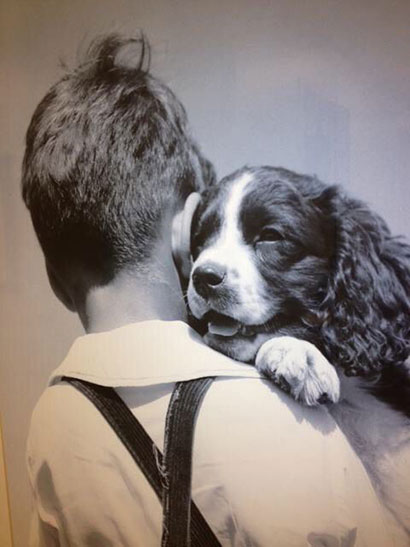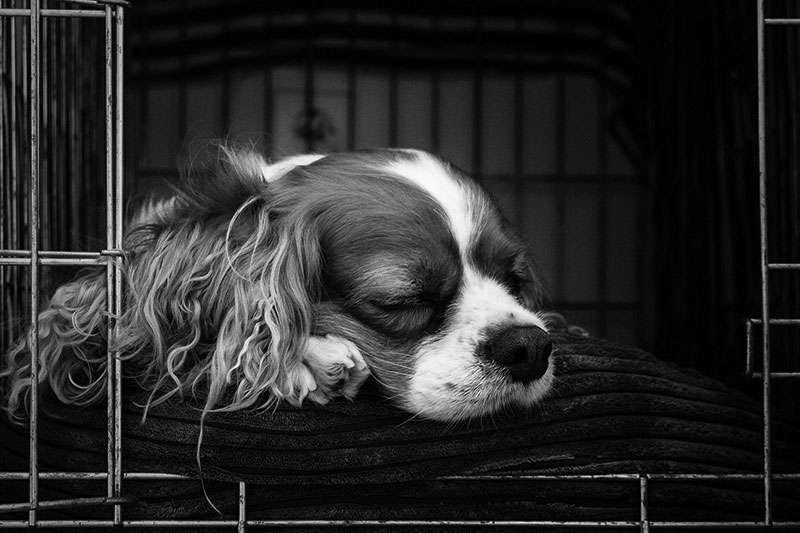Hurricanes & Pets
Your pet is an important part of the family

Some pet owners may believe they are the most important part. Special considerations need to be taken when preparing an evacuation plan that involves animals. Storms disrupt everyone’s routine. Pets are no different. They can react impulsively and more unexpectedly than people during an emergency. Taking stress off them will take stress off of you. According to petcolove.org, 1 in 3 pets go lost in their lifetime. You don’t want to increase that ratio with a lack of disaster planning.
Don't Drink That!
After a hurricane or floodwaters, bacteria could be present in any body of water or puddle. Don’t let your pets roam free. Keep them on a leash. Keep an eye on your pet and what it can get into at nose level. Some things, like spilled chemicals and run-off fertilizers, may not seem dangerous to humans but could be poisonous to an animal. Downed powerlines are another hazard to avoid at all costs. Also, debris and reptiles could be brought in by a storm surge.
Assembling a pet-specific preparedness kit will put your mind at ease before a disaster strikes.
Make sure it includes:
- A list of pet-friendly hotels/motels in your region. Consider Airbnb’s or VRBO’s (Vacation Rentals By Owner). Check what the restrictions are such as number and physical size or species of pet. View this useful website.
- List of boarding facilities and vet hospitals. If your pet can’t stay with you, make sure to call ahead and make a reservation. Pet insurance is also something to consider. Although it can be expensive, if your pet is severely injured or needs surgery during a disaster, insurance can save you hundreds, possibly thousands of dollars.
- Medical records / Medication. If you board your pet, you may need to show its vaccine history. Scan them into your phone and print a hard copy.
- Collar and leash with proper ID. Make sure the information is up to date, including your cell phone number and a back up number of a friend or relative. Consider getting your pet microchipped. Make sure the registration is in your name. But REMEMBER, the average person may not have the ability to scan for a microchip but will be able to read a basic ID tag.
- Current photos of you and your pet. If you become separated, this will prove ownership and assist emergency workers and neighbors locate your pet. Have copies on your phone and printed out.
- Pet first-aid kit. Talk to your vet about the most appropriate items to include.
- A pet first-aid app that doesn’t need an internet connection: Learn about The Bark.
- Safety vest
- Pet food
- Food and water bowls
- Treats
- Blanket
- Poop bags
- Pet shampoo. Helps clean off chemicals and diminish odors.
- Muzzles
- Favorite toys
- Crate or travel kennel
Crate training
Cats, for example, can be particularly challenging to crate. It will be helpful to teach your pet crate training so it’s not overly stressful during evacuation. Make sure the carrier you choose can accommodate a dog standing up, turning around and lying down. You can find good information and a video from the American Kennel Club on crate training your dog.


Holistic solutions to calm your pet
If your pet is nervous, high strung or overly energetic even on a good day — here are some things to consider that can reduce its stress level.
- Mental stimulation
- Music
- Pheromones
- Grooming — massaging and brushing
- Calming treats
- Essential oils
8 Ways To Calm Your Pet Naturally from PetMD
Resources
Tech gadgets for your pet
Some humans are addicted to their gadgets. Your pet doesn’t know what wifi is but helping them through the use of technology can make their and YOUR life easier.
You can use a small and lightweight GPS tracker of your dog.
Glow in the dark collars and leashes are also a great idea in an emergency when power is affected.
Hey! I’m in here!
The ASPCA recommends affixing a rescue alert sticker to your door to alert emergency workers of pets inside. This should include the number and types of pets with your vet’s phone number. If your pets evacuate with you and there’s time, write EVACUATED on a sticker.
Why is my dog acting so strange? The storm is over.
Animals use homes and landmarks to find their way home. In the aftermath of a natural disaster, entire communities could simply disappear. Pets can become confused if their scent markers aren’t there to help them find their way home. This causes disorientation, panic and stress and leads dogs and cats to seek refuge. Try to be patient with your pet after the disaster. Monitor their behavior and contact your vet if it does not subside.
Spay or neuter your pet
Spay or neuter your pets so they won’t impregnate other animals if lost in an emergency.
General information on Pet Disaster Preparedness & Recovery from the Red Cross
Develop a buddy system
Have a designated caregiver. If you have to leave your pets behind, make sure a trusted neighbor, friend or family member knows your pets’ feeding and medication schedule. Also, make them aware of places that your pet may be hiding. When planning before a storm hits, come up with an agreed upon location where you can meet after the storm is over. Ask a pet sitting service if they would be able to help in case of emergency.
Summer and Winter considerations
Even an hour or two in the sweltering heat can mean serious trouble for your pet. If you stay at home during a summer power outage, check to see if your local emergency management office has open pet friendly cooling centers in the area. If it’s winter, don’t be misled by your pets having fur coats. It is dangerous to leave them in an unheated house.
Covid-19 and your pet
If someone tests positive for Covid-19, stay away from close contact with your pet. The risk of a pet spreading Covid-19 to people is low. Do not put masks on your pet. They could harm them. And do not wipe down your pet with chemical disinfectants or other industrial or surface cleaners.
Traveling with your pet by car
Let your dog travel on an empty stomach to avoid carsickness. Have it restrained in a special harness that clicks/attaches to the seat belt. If you use a pet barrier, be sure to secure it firmly so it doesn’t collapse on your pet. And do not let your pet stick its head out the window. Sure it looks cute but it could get hurt by flying debris. If you’re traveling out of your region, make regular stops so your pet can stretch its legs and have a drink of water.
On-The-Go travel kit for your pet
A picture of you and your pet together.
